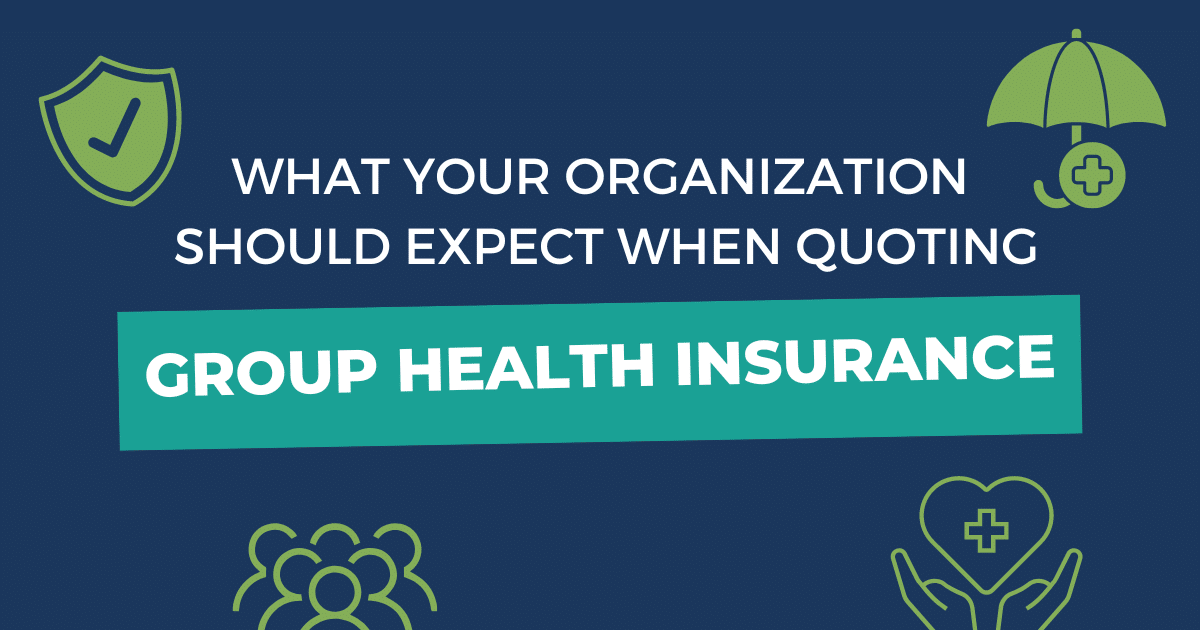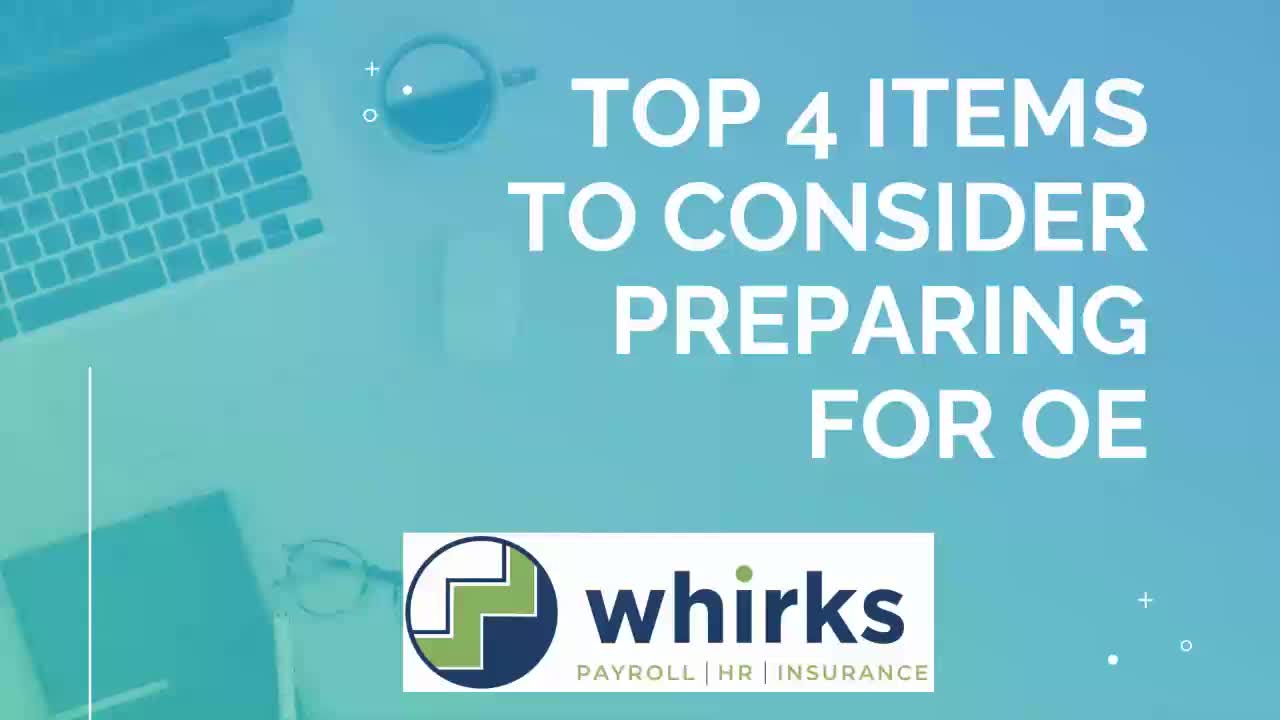What Your Organization Should Expect When Quoting Group Health Insurance
August 18th, 2023 | 6 min. read


In a survey taken by TeamStage, 49% of employees plan on leaving their job in the next 12 months over lack of benefits. Let’s face it; health insurance is one of the most used strategies in attracting the best talent in this fierce war on talent. Offering insurance may seem daunting to implement, but that can depend on the expectations that companies have going into the process.
This blog is designed for small to mid-size businesses looking to get health insurance quotes for their organization. This post intends to help clear out the mysterious fog surrounding getting health insurance for your group. You'll get:
- What information is needed to obtain a quote
- Ways to obtain the quotes from carriers
- Common carrier requirements for groups enrolling into coverage
- A general timeline from submitting census data for quoting to going live with benefits after Open Enrollment.
Gathering the information needed for a group quote
Upon getting a group health insurance quote from carriers, a census will be needed. No matter which carrier you intend to get quotes from, the following information is likely to be required for all benefit-eligible employees:
- Name of employee
- Name of any eligible dependents
- DOB of employee and dependents
- Zip code of employee and dependents
- Gender of employee and dependents
- Date of Hire of the Employee
- Salary (if getting salary-driven benefits quotes like STD, LTD, term life)
- Job Title (if getting salary-driven benefits quotes like STD, LTD, term life)
Actuaries use this information to provide accurate rates for your group by gauging probable healthcare costs that are likely to occur. Though you may have employees you know will not elect coverage for themselves or their dependents, it is best practice to include them on the census when returning to carriers for quoting. Don’t worry, most brokers or health insurance carriers will provide a pre-made census template to fill out.
How to obtain quotes from health insurance carriers
Once you have the necessary information, there are a few ways to obtain quotes from insurance carriers; either working directly with a broker or by navigating through individual carrier websites.
Work with an insurance broker
Insurance brokers are experienced professionals who can help you navigate the complex world of group health insurance. They have relationships with multiple carriers and can provide you with options tailored to your needs.
Brokers typically are paid by the insurance carriers through commissions so using brokers may not cost your company money to use them. 5%-10% is a common commission range based on the amount of insurance a broker sells. This commission percentage can vary based on the type of insurance written as well as the carrier.
There are also some brokers that will charge a brokerage fee and these fees are typically charged monthly. It is wise to understand the costs up front before agreeing to any brokerage agreements.
Regardless of the minimum cost, it is highly encouraged to work with a broker if your organization has never offered group health insurance before.
Directly contact carriers
You can also contact insurance carriers directly to request quotes. This approach may involve more legwork overall, but it gives you a firsthand look at the carriers' offerings. Also, this process can take a considerable amount of time which may push you behind schedule based on when you are planning to start offering health insurance.
Another drawback of working directly with carriers is that you will not have a professional who can help you better understand the differences between quotes that are returned by various carriers. Typically, the quote results will be in differing formats which can add to the confusion when trying to compare apples to apples.
Common carrier requirements
Most carriers have requirements that must be followed before they are willing to bind coverage with a new group. Below are a few examples of varying requirements that must be adhered to with different insurance carriers:
Minimum enrollment requirements
Most insurance carriers will require a minimum number of enrollees or a percentage enrolled based on the overall eligible population. For example, a common enrollment requirement is to have a minimum of 2 employees enrolled for coverage to be bound. Also, carriers like Principal require small groups to have a minimum of 20% of eligible employees enrolled or at least 5 (whichever is met first). It is very important to understand these requirements when selecting benefit plans based on your group’s needs.
Employer contribution requirements
There are some carriers that will require the employer to contribute to the monthly premium of each member enrolled up to a specified percentage. The most common requirement is to have employees contribute at least 50% of the monthly premium per employee. Please note that this is not always a requirement, but this is becoming more and more common.
Eligibility
Most carriers will require that eligible employees be full-time employees who average more than 30 hours of work or more per week. Carriers will allow more specific eligibility such as just offering employees to your management groups, or offering different plans based on the class of employee. It is important to note that if you offer benefits to one employee in a specific class, all employees within that class must be offered the same health insurance at the same premium split between employee and employer.
Waiting periods
Typically, waiting periods can be determined by the employer if they stay within regulations such as the requirements set forth by the ACA (cannot have a waiting period longer than 90 days). There are carriers that will require a waiting period, and this is typically stated upon the return of a quote. The most common waiting periods for new hires or employees who have had a work/life event are outlined below:
- First of the month following 30 days of employment
- First of the month following 60 days of employment
- First of the month following 90 days of employment
- First day of employment (no waiting period)
An insurance timeline from the quote to when it goes live
Quote request
After providing the necessary information mentioned above, you'll request quotes from carriers either by submitting the census data on the individual carrier sites or by providing the census data to your broker. This step can take a few days to a couple of weeks, depending on carrier responsiveness. Some factors that can delay the response time from carriers are the time of year (Q4 has the slowest turnaround times due to the massive amount of January 1 renewals), the type of insurance you are quoting, the incompleteness of your census, etc.
Review and decision
Once you receive quotes, take time to review and compare the offerings. Consult with your team or your broker to make an informed decision. Depending on the size of organization, it may be best to decide on offering at least two medical options; one high deductible health plan (HDHP) and one plan that is more “benefit rich” such as a Silver or a Gold plan. These plans tend to have higher premiums but lower deductibles and lower out of pocket costs.
Ultimately, the plans that you decide to offer your group should be the best plans based on the makeup of your organization.
Application and underwriting
Once you've chosen a carrier, you'll complete an application. These applications will provide the carrier with additional information on your group, the amount of premium that the employer is willing to pay, the different classes that will be offered benefits, etc. The carrier will then review your application and may require additional information based on your initial answers.
Plan setup/enrollment
The most efficient way to gather enrollments is to offer electronic Open Enrollment. Most HRIS systems offer a self-service experience so that employees can elect Benefits. These HRIS systems also can attach plan documents so that the employees have all their resources in one area when going to enroll. Once Open Enrollment is complete, your HRIS system may have reporting that will generate enrollment information that can be sent to carriers. Other times, carriers will have their own spreadsheets that can be filled out and sent in for processing.
Once the carrier has the enrollment data, they will work on uploading it into their system. Doing so will generate insurance cards that can be mailed either to the employer’s address or directly to the residence of the employee.
Effective date
Coverage typically becomes effective on the first day of the first or second month following the enrollment period. Depending on when all the enrollment information was submitted to the carriers, employees may or may not have their enrollment cards at this time. Depending on where the carriers are in their site setup, you may be able to request proof of coverage or digital insurance ID cards in the interim.
The ideal timeline from quoting to the effective date is between 90-120 days. Project management skills are critical when seeing quoting, enrollments and benefit effective dates through to completion. One best practice is to plan your project backward from the effective date and space out your project like the below:
- 90-120 days out: Quotes returned
- 100 days out: Quotes decided and Open Enrollment Planned
- 60-100 days out: Open Enrollment conducted, and paperwork provided to carriers
- 30-60 days out: Time allotted for the carriers to build out their system and produce health insurance cards
Navigating the process of quoting and enrolling in group health insurance can be intricate, but the benefits for your employees and your company's overall well-being are well worth the effort. Working with insurance professionals or brokers can streamline the process and ensure you make the best choices for your team's needs. By providing your employees with comprehensive health coverage, you're not just investing in their health – you're also investing in the success and longevity of your business.
It's always easier when you have help
Need help? Reach out to Whirks today to see how our professionals can help find the perfect group health insurance plans for your team as well as administer the ongoing, tedious benefits duties once your benefits are in effect!
Looking to learn more about the cost of benefits for small businesses? Check out this article to learn more.
Topics: